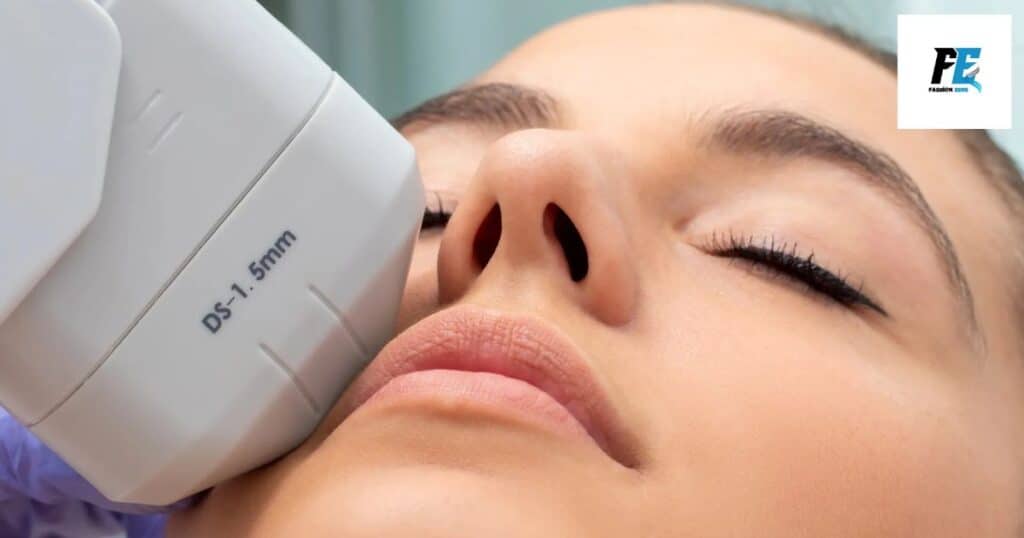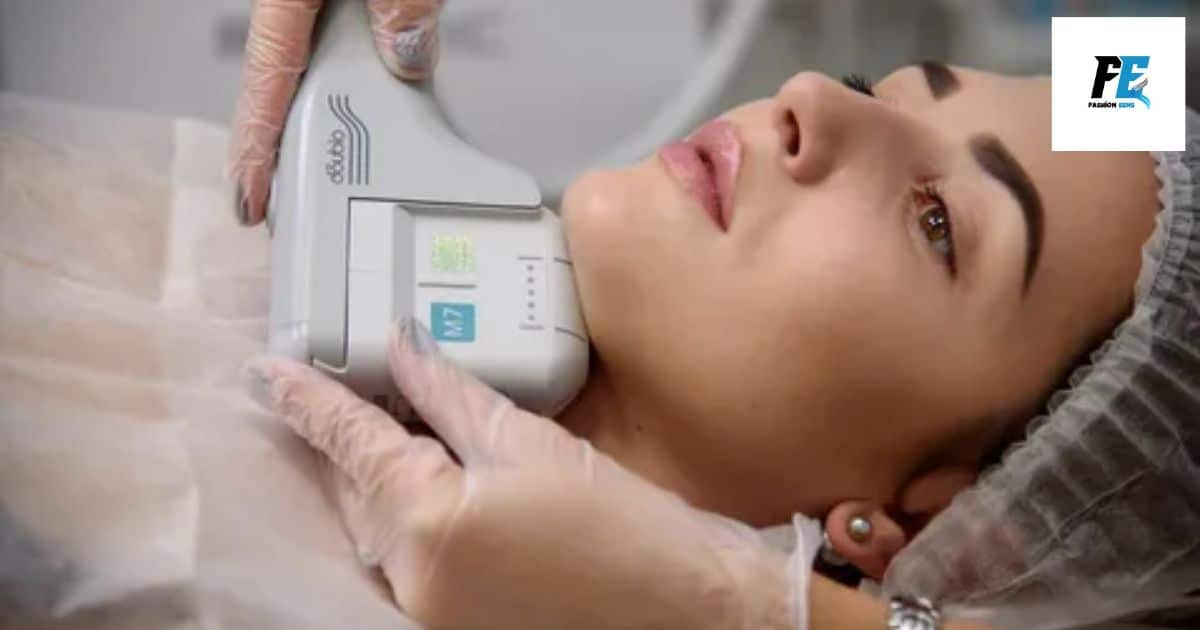HIFU stands for High-Intensity Focused Ultrasound. It is a non-surgical procedure used for face lifting. Special machines use ultrasound energy to tighten the skin on the face. This gives a more youthful look without needing an operation.
While HIFU facelifts are usually safe, things can sometimes go wrong. The treatment may not work as hoped. Or it could cause problems. You need to know the risks. But how often do problems happen? What makes HIFU treatments go wrong? This article will explore when and why HIFU facelifts may not give good results.
To understand when HIFU can fail, we will look at what research says. We will ask experts for their views. You will learn what common mistakes are. Knowing these can help pick a good clinic. This article brings up facts about risks. It aims to help you decide if HIFU is right. By reading this, you get the facts to make the best choice for your own facelift needs.
Is HIFU safe?
Many people wonder about HIFU safety. They want to know if it could hurt them. Most research shows that HIFU is usually very safe. Only a small number of people have had problems. When trained therapists do it right, risks are low. Harmful side effects are rare. Still, everyone reacts differently.
Safety is not guaranteed. Talking to the therapist is important to see if you could have risks. They can also say what side effects might happen to you. Discussing this helps you both understand your specific case. Knowing risks helps make informed decisions about trying HIFU.
More about: HIFU Eye Lift Treatment – Non Surgical Technique
Common Side Effects in HIFU Facelift Procedures

Most people have minor issues after a HIFU treatment. These side effects do not last long. Some of the most common ones are:
- Redness of the skin where treatment occurred. The face might look flushed.
- Swelling around the treated areas. This makes the skin feel puffy.
- Minor bruising or marks that are blue or purple. These fade over days.
- Tingling or skin warmness. This feels odd but goes away fast.
The above problems are prevalent. Most people only have light redness or swelling for a short time. These side effects pose no serious health risk. They show the treatment is working to lift and tighten skin. With time, all minor symptoms disappear without hassle. Understanding normal risks can stop worries about mild issues after HIFU.
Can HIFU damage teeth?
The HIFU machine works close to the mouth area. Some worry it may hurt teeth. Most experts say this is very unlikely. Teeth are hard and strong. They can withstand ultrasound. Still, sound waves are used during treatment near the teeth.
Because of this close location, it’s good to ask a dentist, too, before having HIFU. A dentist can check teeth health and ease any fears. This small step helps people feel more at ease with the safety of jawbone and teeth when getting HIFU on the face.
Can HIFU make you look older?
Many hope HIFU gives a younger look by reducing lines. But can it backfire and do the opposite? As long as treatment is done properly by a skilled therapist, this should not happen. HIFU is made to lift skin naturally over time.
It works to boost collagen, which keeps skin firm. Most people see positive age-reversing effects. But very rarely, an inexperienced person using HIFU could create wrong effects like uneven skin. So, choosing well-trained therapists prevents this worry.
More about: 4D and 7D HIFU – Main differences of 2 newest skin tightening techniques
Rare and Temporary Reactions to HIFU Facelift
A few people may have small issues from HIFU that go away quickly. These happen in just a small number. Reactions like light bruising or a short tingling feeling are not a major risk. The body simply adjusts to the ultrasound work for a few days.
For most, these reactions disappear within 1-2 weeks without treatment being needed. Knowing both common and rare short reactions is helpful when going into HIFU treatments.
Dangers of HIFU treatment

While usually low risk, there are some real but rare dangers to HIFU treatments. Pain can occur during or after in sensitive areas. More seriously, burns or infections are possible problems. This only happens if guidelines are not followed properly.
Make sure to check any clinic’s safety history thoroughly. Asking about therapist qualifications is important too for avoiding dangers. With care taken in the treatment process, serious risks remain very uncommon with HIFU. Understanding all potential harms is wise for informed consent.
Why HIFU treatment gone wrong?
Sometimes, HIFU does not work out quite right due to preventable mistakes. Inexperienced people doing the procedure can cause issues by not operating tools correctly. Machines set to the wrong levels may hurt the skin, too.
Clinics rushing through may fail to learn about a person’s medical needs first properly. Any of these reasons could lead the treatment to go wrong. To help avoid this, thoroughly research clinics and ask about staff experience levels. Knowing why mistakes happen can guide you to choose carefully for the safest results.
More about: Fixing Microblading Gone Wrong: Quick Solutions for Bad Eyebrows
Reasons Why HIFU treatment gone wrong?
There are a few main reasons why a HIFU treatment may fail. They include:
- Inexperienced staff: Therapists new to HIFU may need to pay more attention to the ultrasound waves through errors.
- Wrong machine settings: Using settings that are too high or too low on the tool’s controls could burn or have no impact.
- Rushing appointments: Clinics scheduling patients too fast may skip needed health history checks.
- Low-quality equipment: Outdated or inferior machines give unpredictable results.
- Poor aftercare advice: Not following guidelines on care after HIFU could cause problems.
Making sure to look up any clinician’s credentials carefully is important. Their treatment methods should also be reviewed. Picking a center with a good reputation and new equipment helps avoid most issues. Following all post-care instructions further reduces the small risk of a HIFU facial not working out correctly.
What should I do when HIFU treatment gone wrong?

Even with great care, sometimes a HIFU treatment may cause issues. If unwanted side effects come up, fast action is best.
First, do not panic; instead, stay calm. Contact the clinic right away to discuss concerns. A staff expert will properly examine what went wrong. They can determine if extra HIFU sessions or other remedies, like skin creams, may fix problems.
Seeking medical help should only happen if deemed necessary. Following a provider’s advice for correcting any treatment failure leads to the safest solution.
Taking care of any issues that arise ensures the full benefits of HIFU are still available. With guidance, failed treatments often get put right to achieve smiling results.
FAQs
Can HIFU treatment go wrong?
Yes, while rare, there is a small risk of HIFU not working as intended or causing issues if not performed properly by trained staff using good equipment and techniques. Proper research of clinics can help minimize risks.
Does HIFU have risks?
Like any medical procedure, HIFU has some risks, but serious complications are uncommon. Side effects are usually minor and temporary. Risks increase if guidelines are not followed. Expert practitioners can safely deliver results for most.
Can HIFU cause nerve damage?
Nerve damage is very rare when HIFU is performed correctly by experienced hands. Risks are minimized with the accurate application of focused ultrasound energy to target areas safely.
What are the complications of HIFU treatment?
Potential but uncommon complications include burns, bruising, infection, and inconsistencies. Properly done by a qualified expert in an accredited facility, complications are avoidable for most through safe techniques, settings, and care.
Final thoughts
HIFU is generally a very safe, non-invasive procedure for facelifts, it is still important to be aware of potential side effects and risks. By choosing a qualified and experienced practitioner and ensuring proper device settings and care, the risks can be minimized.
No treatment is perfect, and there may be rare instances where things go differently than planned. Being an informed patient and understanding both common and uncommon reactions can help people feel more confident in their decision process.
With careful consideration of an individual’s needs and health history, HIFU continues to be a favorable option, providing positive rejuvenating results for many seeking aesthetic improvements.

Welcome to Fashioneens! Your go-to destination for trendy fashion tips and style guides. Join us in exploring the latest in fashion trends and unleash your inner style icon!



